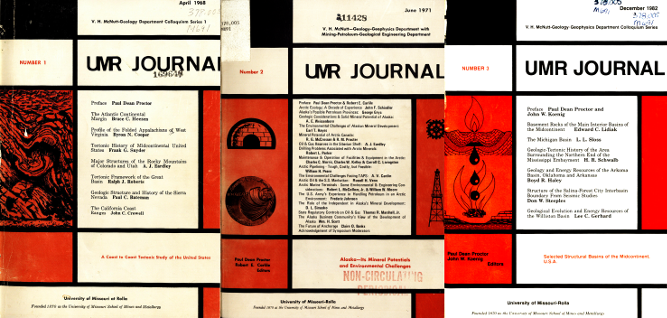UMR Journal -- V. H. McNutt Colloquium Series

Publication Date
01 Apr 1968
Abstract
Western California between the 37th and 40th parallels is part of an active mobile orogenic belt in which sedimentation, deformation, volcanism, and plutonism have been intimately associated since the mid-Mesozoic. At present, the region is still undergoing folding and warping as shown by data from geodetic triangulation networks and geomorphology, and several major high-angle fault zones are seismically active. These faults continue to acquire displacement both suddenly during earthquakes and slowly by gentle creep with no recordable shocks. Pleistocene beds and terraces at places are steeply warped. Strong deformation occurred during the late Pliocene and early Pleistocene. Most of the Tertiary was characterized by fragmentation of the region into basins and intervening ranges following comparatively more widespread sedimentary transgressions and regressions during the early Tertiary and late Mesozoic.
The structural significance and history of the San Andreas fault system are still under study. In central California, Pliocene and Pleistocene sedimentary facies are apparently offset laterally as much as 25 miles, but in this region strike-slip of greater amounts in older rocks has not yet been documented. The San Andreas separates very different terranes, with mismatched stratigraphic sections facing across the fault. These probably can be matched only through recourse to major right-slip, increasing in displacement with age. Right-slip of about 200 miles is reasonably well established in southern California, and such displacements, extended into central and northern California, probably account for the contrast in terranes, including basement. Here the San Andreas separates the Franciscan complex of disturbed graywacke, mudstone, chert, conglomerate, limestone, mafic and ultramafic volcanic rocks and serpentine, and associated metamorphic rocks from the basement of granites and gneiss. The magnitude and timing of displacements on the San Andreas and related faults, which probably originated in the early Tertiary, will only be determined through the mapping and correlating of sedimentary facies that are cut and offset by the fault. As yet this analysis has but barely commenced.
The Sierra Nevada and Klamath Mountains were the site of rapid eugeosynclinal sedimentation and volcanism in early Late Jurassic time. These strata were deformed, metamorphosed, faulted, and intruded by serpentine and granitic plutons in turn; all in the mid-Late Jurassic. Following uplift, deep erosion, and subsidence, sedimentation in the latest Jurassic transgressed and overlapped eastward across the ancient Sierran margin. Altogether, 40,000 feet of mudstone, graywacke, and conglomerate were deposited in the Great Valley sequence by the end of the Cretaceous. Beginning also in the early Late Jurassic nearby, but in unclear tectonic relationship to the Great Valley sequence, Franciscan sedimentation, volcanism, and downbuckling carried strata to depths of about 70,000 feet. Here deeper beds were converted to the blueschist metamorphic facies and then rapidly elevated and perhaps in part thrusted in mid-Late Jurassic time. Following continued eugeosynclinal sedimentation, major thrusting or downslope sliding and mixing on a grand scale took place in the Franciscan terrane in the Middle Cretaceous. The complexity of the Franciscan is the consequence of these events together with overprints of Tertiary deformation, which at places also included major thrusting and near isoclinal folding, diapir or piercement structures, limited gravitational sliding, and strong deformation along high-angle shear zones.
Ancient and complex rocks of the thick continental crust give way abruptly to the simple, thin, and presumably younger crust beneath the Pacific Ocean. The Moho discontinuity has a depth of about 18 miles (29 km) under the Coast Ranges and rises to about 8 miles (13 km) under the basaltic oceanic crust. Pacific fault zones apparently pass largely beneath, and only slightly disturb, the continental plate. Faults of the San Andreas system probably are mainly confined to the continental plate and may converge and merge to constitute the continental margin.
Document Version
Final Version
File Type
text
Language(s)
English
Rights
© 1968 University of Missouri--Rolla, All rights reserved.
First Page
133
Last Page
156
Recommended Citation
Crowell, John C.
(1968)
"The California Coast Ranges,"
UMR Journal -- V. H. McNutt Colloquium Series: Vol. 1, Article 9.
Available at:
https://scholarsmine.mst.edu/umr-journal/vol1/iss1/9


